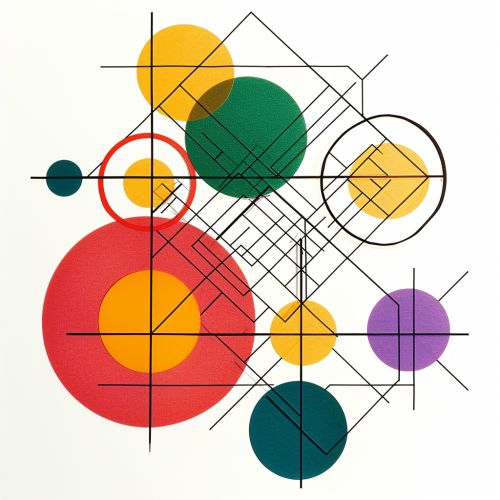Division algebra
Introduction
Division algebra, also known as a division ring or skew field, is a type of algebraic structure that generalizes the concept of a field. In a division algebra, the operation of division is always possible, but multiplication does not necessarily follow the commutative property, meaning that the order of multiplication can affect the result.


Definition
Formally, a division algebra is a set A equipped with two binary operations, addition (+) and multiplication (×), and a unary operation, additive inverse (-), such that the following properties hold:
1. A is a group under addition, with additive identity denoted as 0. 2. The set A \ {0} (i.e., A without the zero element) is a group under multiplication, with multiplicative identity denoted as 1. 3. Multiplication is distributive over addition, meaning that for all a, b, and c in A, we have a × (b + c) = a × b + a × c and (b + c) × a = b × a + c × a.
Unlike fields, division algebras do not require that multiplication be commutative; that is, for a and b in A, a × b does not necessarily equal b × a.
Examples
Real Numbers
The real numbers form a division algebra under the usual operations of addition and multiplication. This is because the real numbers are a field, and every field is a division algebra.
Complex Numbers
The complex numbers also form a division algebra. Like the real numbers, the complex numbers form a field, so they satisfy all the properties of a division algebra.
Quaternions
The quaternions, denoted as H, form a division algebra that is not commutative. This means that for quaternions a and b, the equation a × b = b × a does not always hold.
Properties
Division algebras have several important properties that distinguish them from other algebraic structures. These include:
1. **Noncommutativity**: As mentioned, division algebras are not necessarily commutative under multiplication. This is in contrast to fields, which are always commutative.
2. **Associativity**: Division algebras are associative under multiplication. This means that for any elements a, b, and c in the division algebra, the equation (a × b) × c = a × (b × c) always holds.
3. **Distributivity**: Division algebras are distributive, meaning that multiplication distributes over addition. This property is shared with many other algebraic structures, including fields and rings.
4. **Existence of Multiplicative Inverses**: For every non-zero element a in a division algebra, there exists an element b such that a × b = b × a = 1. This element b is called the multiplicative inverse of a.
Division Algebras and Other Algebraic Structures
Division algebras are closely related to several other types of algebraic structures. In particular, they generalize the concept of a field, which is a commutative division algebra. They also relate to rings, which are similar to division algebras but do not require the existence of multiplicative inverses for non-zero elements.
Applications
Division algebras have applications in various areas of mathematics and physics. For example, they are used in the study of algebraic topology, differential geometry, and quantum mechanics. In particular, the non-commutative nature of certain division algebras, such as the quaternions, makes them useful for describing phenomena where the order of operations matters.
